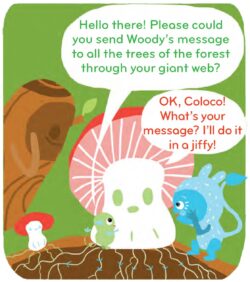Order by 17th December for guaranteed pre-Christmas delivery!
Search
Close search

The wood wide web, coined and discovered by Dr. Suzanne Simard in 1990, is the intricate process of how trees talk and help each other. More specifically, it is a complex underground web of roots and mycorrhizal fungi that connect trees and other plants to one another.
“At the time, lots of people in forestry were looking at how trees compete for light, but I got more and more interested in what was going on below ground, because I figured out that was where the action was.” - Dr. Suzanne Simard, forest ecologist from the University of British Columbia.
The wood wide web is 500 million years old and connects an estimated 90% of land plants.
The wood wide web is a collaborative relationship between plants and mycorrhizal fungi. Plants provide carbon-rich sugars made by photosynthesis and share them with the fungi, and in return the trees are given nutrients, such as phosphorus and nitrogen. As the fungal threads grow and spread, they link up the plants around them to create a network. Through these networks, plants are able to exchange sugars, nutrients, water and more.
Simard also identified a 'mother tree', these trees are the normally the largest in the forest and act as hubs for the vast networks. A mother tree would supply seedlings with nutrients they need to grow, using this network of helpful fungi. But the wood wide web isn't just about sharing useful nutrients, it also allows plants to share signals. When a plant has an infestation, they can use this underground web to send a signal to neighbouring plants so that they are able to raise their defences.

Page 7, OKIDO magazine #111 Trees.
"The revelation of the Wood Wide Web’s existence, and the increased understanding of its functions, raises big questions—about where species begin and end; about whether a forest might be better imagined as a single superorganism, rather than a grouping of independent individualistic ones; and about what trading, sharing, or even friendship might mean among plants." - The Secrets of the Wood Wide Web, The New Yorker.
Learn why leaves change colour with Zim, Zam and Zoom, explore tree bathing with Messy, create a flapping owl, make a log cake, plus loads more with OKIDO.
OKIDO has a BRAND NEW app to make learning with OKIDO even more fun! This digital companion to your magazine brings new extra, interactive content every month to help bring the topic to life. Find out more here.